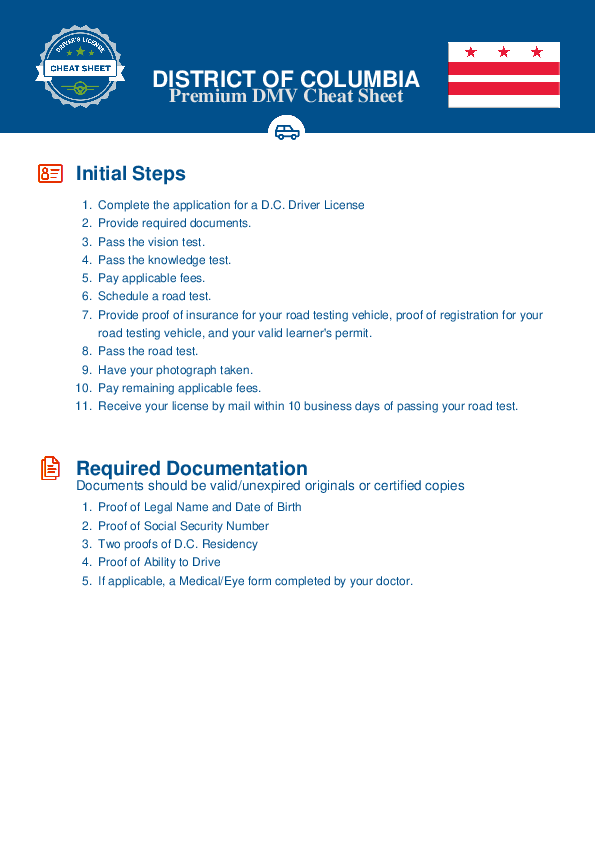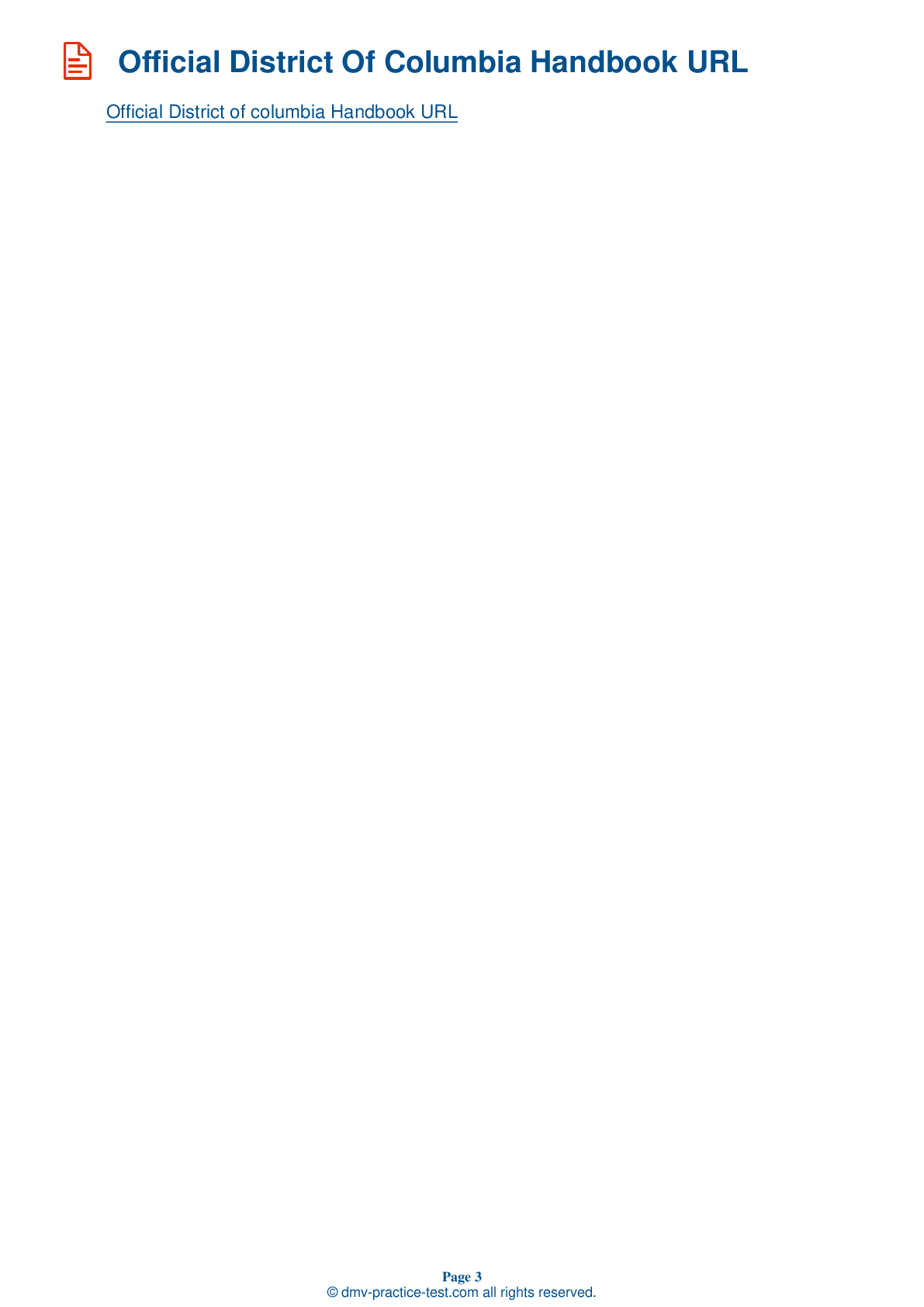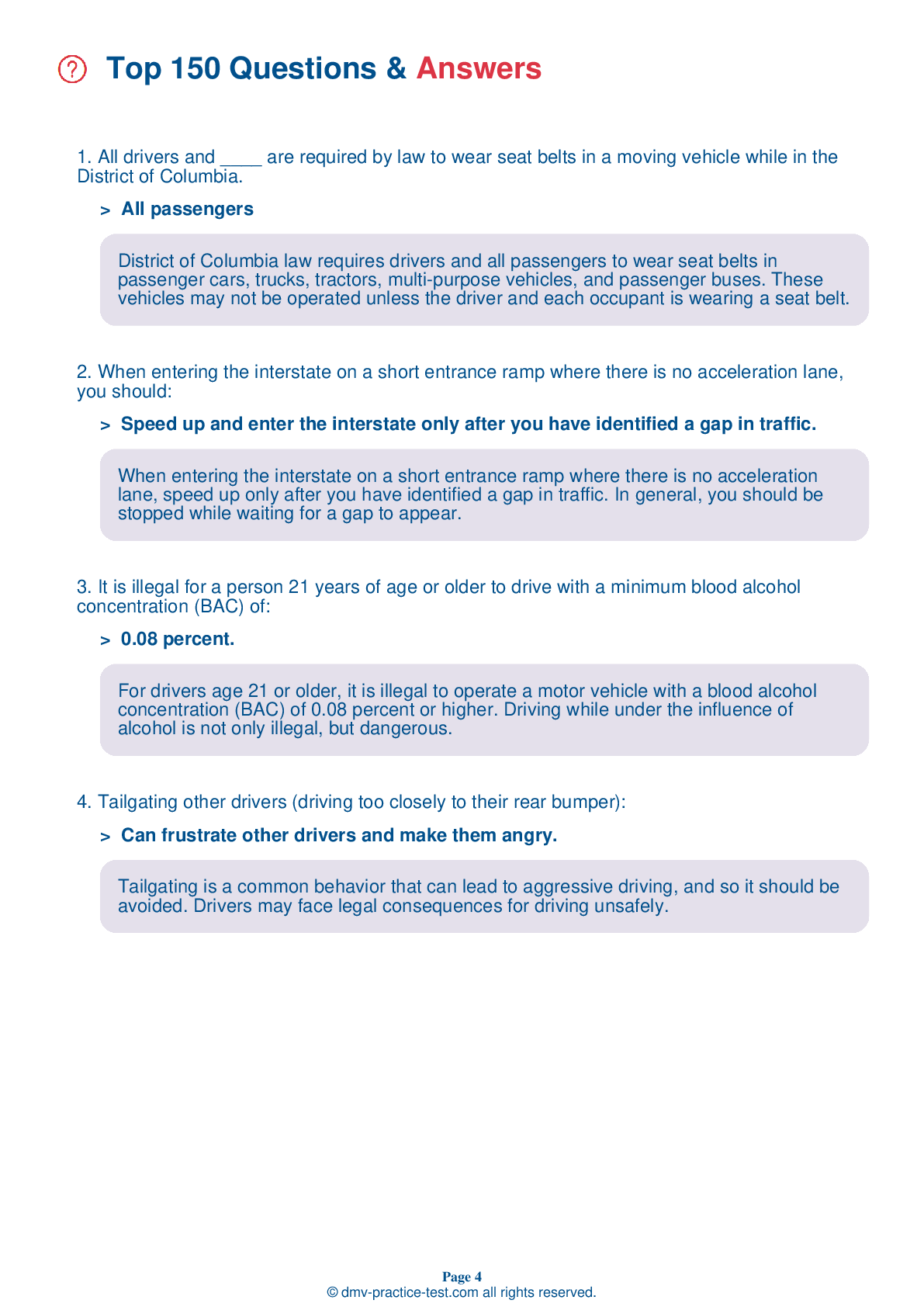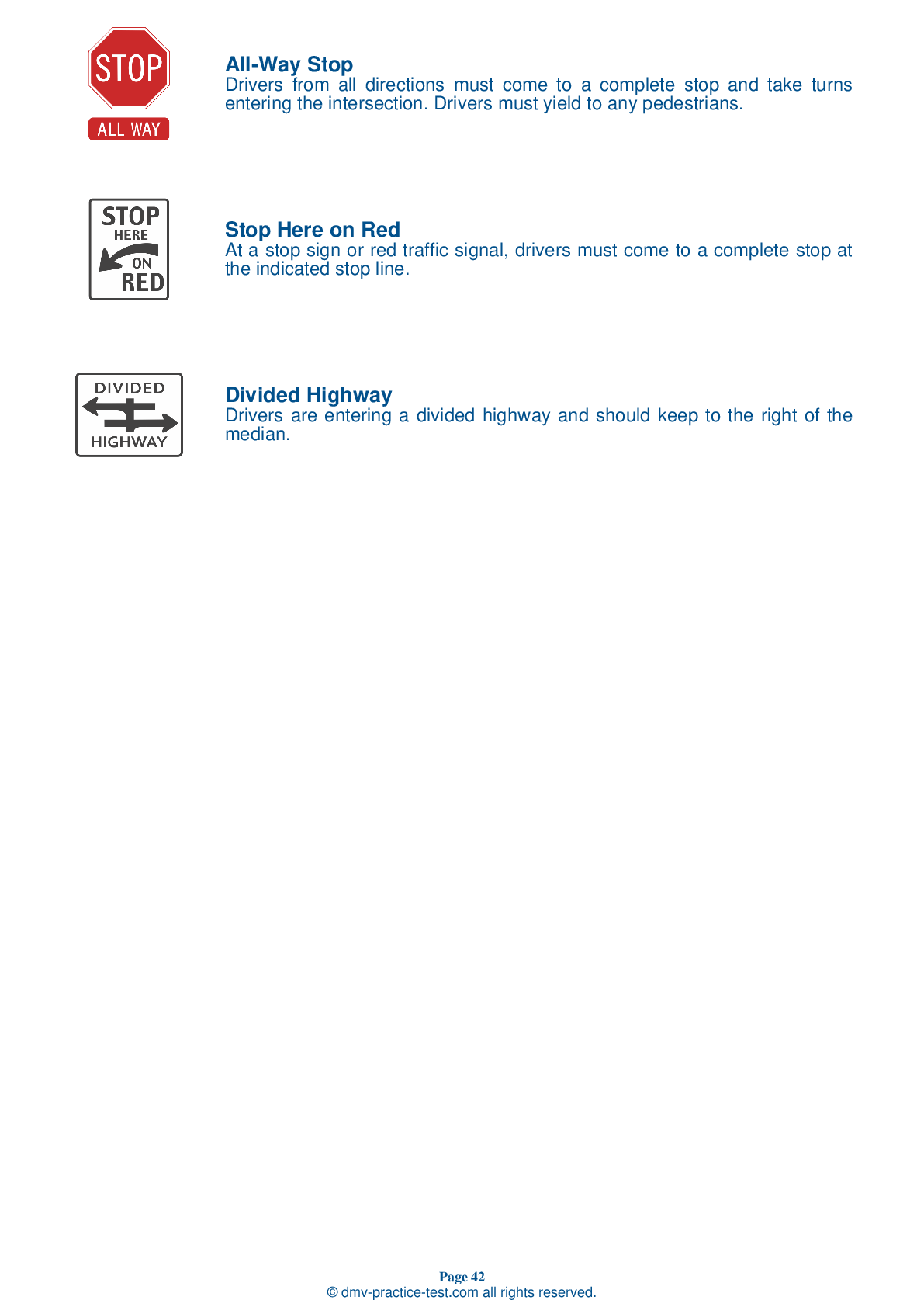FREE District Of Columbia DMV Practice Test #13
This set of District Of Columbia DMV practise tests was been updated for January 2025. It includes questions based on the District Of Columbia Driver Handbook's most significant traffic signs and laws for 2025. Use actual questions that are very similar (often identical!) to the DMV driving permit test and driver's licence exam to study for the DMV driving permit test and driver's licence exam.
On the practise exam, each question gets a tip and explanation to help you remember the concepts. The written component of the official DMV test will include questions about traffic rules, traffic signs, and driving statutes, as well as information from the Driver Handbook.
To achieve the required passing grade, you must correctly answer 20 of the 25 questions. Take our DMV practise exam to help you prepare for your District Of Columbia instruction permit or driver's licence.
The DMV exam is available in several languages.
Using any form of testing help will result in an automatic fail, and the DMV may take further action against your driver's licence, so avoid it.
1 . This road sign means:
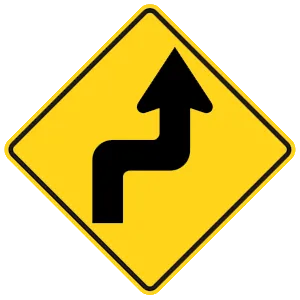
Warning signs are usually yellow with black markings. This sign indicates that the road ahead will turn sharply to the right and then sharply to the left.
2 . If you have an argument with another person and you are angry, you should:
Your emotions affect your ability to drive safely. If you are overly angry, excited, afraid, worried, or depressed, you should give yourself time to calm down before operating a vehicle. You need to be able to mentally focus on driving without thinking about the things that made you upset.
3 . Drive below the posted speed limit when:
When the road is wet or slippery, when you cannot see well, or when anything else makes conditions less than perfect, drive below the posted speed limit. Even if you are driving within the posted speed limit, you can still be ticketed for driving too fast for conditions.
4 . Drowsy drivers:
Drowsiness can make people drive so poorly that they appear to be drunk. Opening a window, turning on the radio, or drinking coffee is not enough to make a drowsy driver alert to roadway hazards.
5 . Which of the following statements about blind spots is true?
Blind spots are areas that a driver cannot see if they look in their mirrors. Large trucks have large blind spots that drivers of other vehicles should avoid.
6 . Before changing lanes on a multilane highway, you should:
Before changing lanes, you should look in your rearview and side mirrors to make sure no one is trying to pass you. You should also look over your shoulder to make sure that no one is in your blind spot.
7 . When driving in fog, you should use your:
If you must drive in foggy conditions, you should use your low beam headlights, as well as your fog lights, if your vehicle has them. High beams direct their light upwards, where it can bounce off the fog and into your eyes, reducing visibility even more.
8 . You are driving on a one-way street. You may only turn left onto another one-way street if:
You may turn left onto a one-way street that moves to the left if there is no sign prohibiting the turn. You may not turn left onto a one-way street where traffic moves to the right.
See the exact questions that will be on the 2025 District Of Columbia DMV exam.
99.2% of people who use the cheat sheet pass the FIRST TIME
LT gives us an insight on how the cheat sheet provided her with all the study questions she needed before taking her test.
Joe initially studied with the handbook and failed his test, he eventually found us online, studied and pass his test the first time around.
